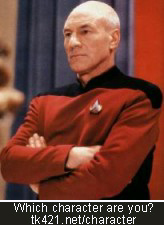- Shaman King volume 1 by Hiroyuki Takei. I wasn't at all sure I'd like this book, but I ordered it on a whim from my niece's Scholastic Books order--the school gets something as a result of people ordering though them. Books, I think. Anyway, Shaman King was pretty fun. It does have a lot of action--cool fight scenes take up quite a few of the pages (but it's boy's manga, so what can I expect?). The story is a little on the thin side, compared to something like Sandman, but it did have lots of Japanese myth and folklore, and the plot wasn't as much of a thin frame on which to hang fight sequences as a lot of boy's manga has (judging by the latest issue of Shonen Jump, anyway). It won't be right at the top of my list, but I will be watching for volume 2 in my local comic shop.
I also read the aforementioned latest issue of Shonen Jump (shonen = boy's manga). At 360-odd pages, it probably could count as a graphic novel (though technically, it's an anthology, not a novel), but it didn't feel like one. It felt like a big magazine, so I haven't put it on the list.
But I was going to blather on about manga and anime. I think I mentioned something about becoming addicted to anime again (one website I saw says, "Anime: crack is cheaper" and another said, "If you want a cheap addiction, try drugs.") But anyway. Aside from Princess Mononoke and Spirited Away, I haven't watched much anime for a while. I used to, though. Once upon a time, my favourite tv show was The Transformers (also indirectly responsible for my comics habit). And before that, I loved Battle of the Planets. Then there was Robotech, all three storylines. But then I didn't watch much for a while. Not until many years later when Tim and I got addicted after watching Space: The Imagination Station's Friday night (or was it Saturday?) anime movies that came on after Lexx. Space doesn't play anime anymore, due to lack of interest, apparently.
More recently, I've been watching Cybersix and Inu-Yasha (it's back on!) on YTV and TeleToon (which our stupid free tv guide doesn't even list). Combined with a returning fascination with manga, it was only a matter of time before addiciton happened.
And as for manga . . . If you're aware at all of the state of the comic book industry (a good place to learn is the archives of Journalista, the no-longer-updated blog of The Comics Journal), then you'll know that kids these days don't care about superheroes; they want manga. And a lot of adults do, too. I can see why. Though there are lots of good independent (and non-superhero) books published in North America, most of the big publishers seem to be recycling the same old superheroes (except they dress them in less clothing and put them in poses straight out of porn--so I am told, and it looks like it), presumably to make them more appealing. Superheroes interest me even less than they ever did. And it seems like a lot of people feel that way.
I've been trying to resist the lure of manga. I've been trying very hard. It wasn't too difficult in the past, when manga (in English) was mostly reprinted in the same format as American comics, and for the same price. Because a lot of manga tends to have less story per page than the stuff I usually like to read (nice, dense, story-heavy stuff) (I suspect the story per page thing may be about the same in superhero comics as in action manga, but I don't know), I always thought manga was too expensive. Not enough bang for the buck as it were (or not enough story, rather). But now that most publishers have switched to the thick graphic novel format--usually around 200 pages a book--for only 2 or 3 times the price of a 24-36 page comic, manga seems to be a much better buy. (I'm speaking metaphorically, of course, and in broad generalizations. I don't actually decide whether or not to buy something based on how much of the story is crammed onto one page.)
I wonder if this is coming out of my brain as logically as it seemed when I was thinking about it.
Anyway, I tried to resist the trend. I hate being trendy. I dislike doing what everyone else is doing. But I try not to avoid something just because everyone else likes it. I could miss out on some really good stuff that way. So the result is that my growing anime addiction is closely accompanied by a new manga addiction. Like I need more comics to spend money on. Luckily, the popularity of manga means that there are quite a few titles at the libary, though volume 1 of just about everything always seems to be checked out. Time to exercise my ability to put holds on books via the library web search page.
I'm sure there was a lot more I was going to say, and probably I was going to say some of those things more elegantly, or more clearly, or in a different order. But I don't wish to bore my gentle readers, so I'll shut up for now.







